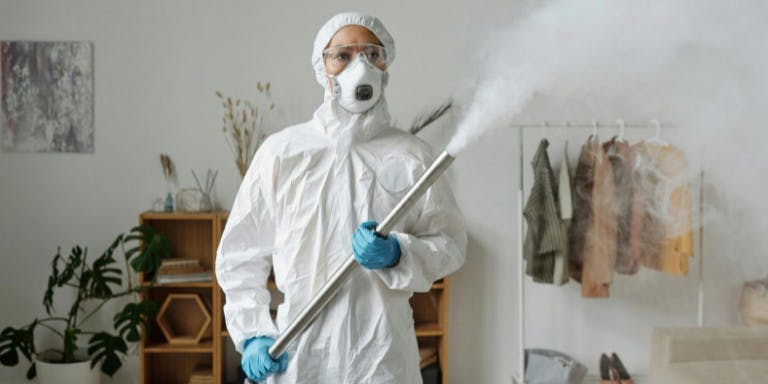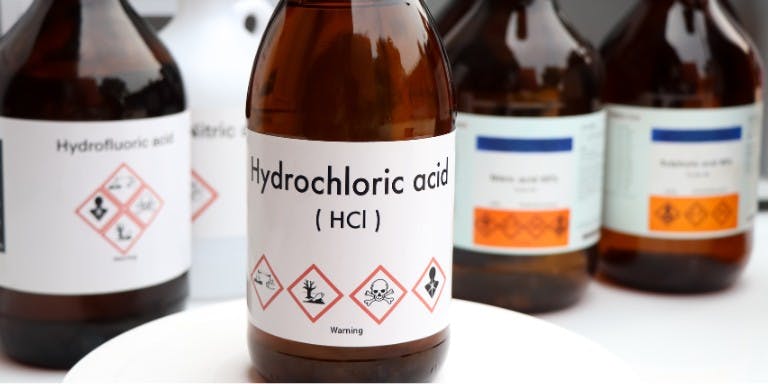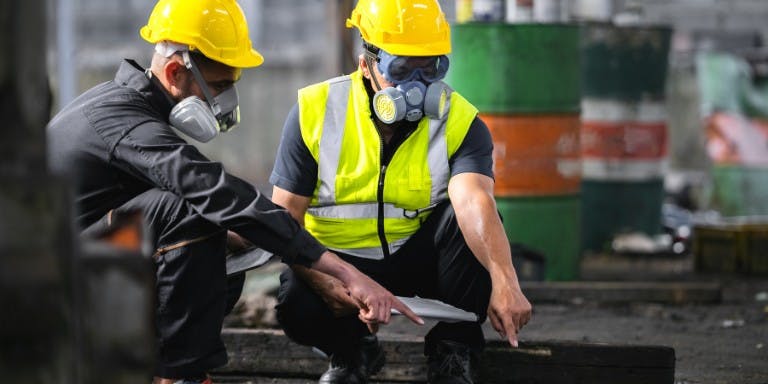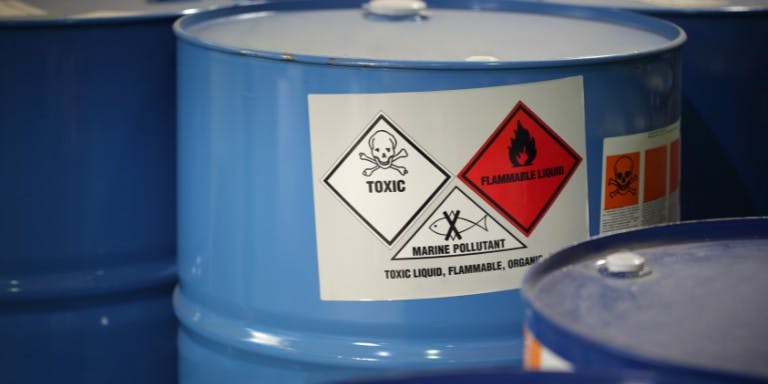First published on Friday, March 28, 2025
Last updated on Friday, March 28, 2025
Jump to section
If your workplace involves handling hazardous substances , you’ve probably heard of COSHH (Control of Substances Hazardous to Health). But have you come across Workplace Exposure Limits (WELs)?
If not, don’t worry—you’re not alone. Many employers struggle to navigate COSHH regulations, but understanding WELs can help you understand COSHH and your duty to keep your employees safe and your business compliant.
What is a WEL?
WEL refers to workplace exposure limit, often abbreviated as WELs, and is also known as permissible exposure limits. In simple terms, they set the exposure levels at which workers are likely to contract occupational ill health.
Their primary purpose is to safeguard employees from health hazards linked to inhaling dangerous materials in the air like dust, fumes, and vapours.
These limits are set by the Health and Safety Executive (HSE) and are measured over a specified time frame in:
Parts per million (ppm)
Milligrams per cubic meter (mg/m³)
WELs are calculated based on an average over a designated period. During this time, there is a maximum allowable exposure to specific hazardous substances. As the concentration of these substances can vary, WELs are determined using time-weighted averages (TWA).
The two time periods commonly used for WELs:
Long-Term Exposure Limit (LTEL)
This is the maximum concentration of a substance a worker can be exposed to over an 8-hour period. It helps prevent chronic health effects from prolonged exposure.
Short-Term Exposure Limit (STEL)
This refers to the maximum concentration allowed over a shorter period, typically 15 minutes. It protects workers from sudden high exposures that could cause immediate harm, such as dizziness, nausea, or irritation.
While there are thousands of substances that could be used in your business, only 500 substances have WELs. The HSE EH40 document provides a comprehensive list of workplace exposure limits and should be referred to for up-to-date regulations.
For products containing more than one chemical the product safety data sheet(SDS) will list the chemical substances and section 8 within the SDS will give you details of any relevant WELs.
Why should you care about WELs?
Ignoring WELs isn’t just a bad idea—it can lead to serious consequences:
Employees could develop respiratory issues, skin conditions, or long-term illnesses.
You might face legal trouble if you’re not complying with COSHH regulations.
Occupation health is a priority issue for the enforcing authorities.
Fines, compensation claims, and reputational damage could hit your business hard.
Simply put, monitoring exposure isn’t just a box-ticking exercise—it’s about protecting your team and keeping your workplace running smoothly.
Why must exposure be monitored?
If there’s even a chance that WELs could be exceeded, you need to take action. Depending on the risks the following might be necessary:
Air monitoring
Personal exposure assessments
Health surveillance checks
Regular testing helps ensure your control measures are actually working and that your employees aren’t breathing in more than they should be.
How to stay compliant with COSHH WELs
Identify hazardous substances
Start by figuring out what hazardous substances are in your workplace. Check Safety Data Sheets (SDS) from suppliers and see if any substances have assigned WELs.
Measure exposure levels
If there’s a risk of exceeding WELs, don’t guess—measure. Air monitoring will give you the data you need to see if additional controls are required. Keeping exposure within permissible exposure limits and reducing exposure to as low a level as is reasonably practicable is the goal here.
Put control measures in place
If exposure levels are creeping too close to the limits, it’s time to step in and implement control measures. Remember
For example, you might need to:
Upgrade ventilation systems
Provide personal protective equipment (PPE) like masks and gloves
Swap out hazardous substances for safer alternatives
Train employees on safe handling and best practices
Limit how long and how often workers are exposed to certain substances
Monitor and review regularly
WELs aren’t set in stone—new research and regulations can change them. Keep an eye on the latest HSE EH40 updates and supplier safety data sheets, reassess exposure levels regularly, and tweak control measures when necessary.
Keep records
Good record-keeping isn’t just for compliance—it also helps you track trends and spot issues before they become serious problems. Document everything, from risk assessments to air monitoring results, health surveillance and training sessions.
Get advice when you need it for workplace exposure limits
Understanding COSHH might seem overwhelming at first, but it’s actually pretty straightforward:
Identify risks
Measure exposure
Control hazards
Stay updated
And understanding WELs is just one part to help you comply with COSHH.
For 24/7 health & safety advice, with access to health & safety professionals that can help you at any time with workplace exposure limits or COSHH. Or if you're looking for health & safety software with built in tools for COSHH assessments check out BrightSafe. Just remember a little effort now can save you from big problems down the road!







